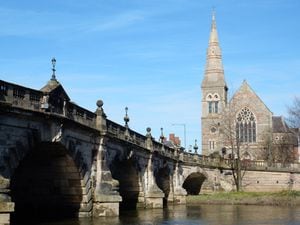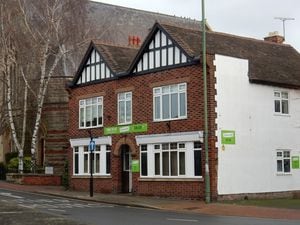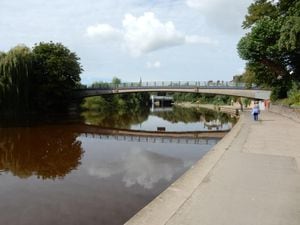Phil Gillam: Bridge that spans the river and the years
The swans were on the river. T. Rex were on the radio. I was on the brink of something new.

That September I was due to begin my two-year course at Tech … everyone called it Tech back then; nowadays it’s Shrewsbury College.
I was excited about the start of a new chapter. And I knew that Tech – and the exams I would take there – would offer me thrilling opportunities.
But all that was still just a little way off.
It was the summer of 1973 and I was just sweet 16, enjoying a lovely little part-time job at the old Coleham Head offices of the Shrewsbury Circular.
My summer holidays between finishing school and starting Tech therefore included three hours each afternoon of emptying ashtrays, sweeping floors, washing up, making tea and coffee, and running errands.
Oh, by the way, for those who don’t remember it, the Circular was a weekly publication packed with local adverts and delivered by hand to homes across the town.
The publication and the building in which it was printed have both long since gone.
Anyway. I loved every single minute of working as a young office assistant (general dog’s body) and I especially loved the daily walk from our Castlefields home along the riverside and over the English Bridge to the 1930s-built Circular HQ (since replaced by the ultra-modern-looking Mansers’ Antiques building, of course.)
Looking back, I feel sure the sun shone every afternoon. What a lovely walk to have to take each day!
Like so much of Shrewsbury’s architecture, the elegant English Bridge has seared itself into my psyche.
And it was during that summer of 1973 that I really got to love it.
I appreciated its beauty and found out about its history.
Designed by architect and civil engineer John Gwynn (a man who was born and died in Shrewsbury), the bridge was opened to traffic in 1774.
There are photographs of the bridge from the early 1900s that make it appear most tranquil, but I rather like the story that on one occasion a gentleman was fined two shillings and sixpence for ferociously driving his horse and cart down Wyle Cop and over the bridge. (An early example of road rage, perhaps).
By the 1920s, it had become obvious that the bridge was unable to cope with the growing amount of motorised traffic.
And so a plan was devised to rebuild the bridge, making it a lot wider.
Work commenced in 1925 and for two years all traffic was diverted over a temporary wooden crossing.
The reconstructed bridge was due to be opened by the Prince of Wales on October 27, 1927, but because of the sudden death of his uncle, the Marquis of Cambridge, this was postponed.
The borough council then had a bit of a re-think and wrote to Queen Mary (who had crossed the bridge some months before on August 13) to ask her if they could use a plaque (seeing as she had been the first person to cross the new bridge in a car) saying that she’d actually opened it. She agreed, and thus a circular panel was inserted over the centre arch, marking the auspicious event.
And that, in a nutshell, is the story of the 1774 (reconstructed 1927) English Bridge, a seven-arched stone bridge that has, over time, become as much a part of Shrewsbury as Drapers’ Hall, Ireland’s Mansion, and Rowley’s House.
Meanwhile, here we are in October 2017 and we have a fair old bit of work going on right now around the English Bridge gyratory system. The work, which began at the end of July and is due to finish later this month, is being carried out as part of the Shrewsbury Integrated Transport Package, and includes aesthetic enhancements, resurfacing, improvements for pedestrians and cyclists, and a new mini-roundabout at Coleham Head.
Hopefully, townsfolk will appreciate the changes, although, unlike in 1927, I don’t suppose we’ll be getting a royal personage to open the new-look area!





